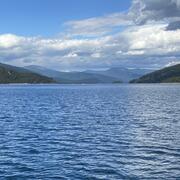Welcome to the Wyoming-Montana Water Science Center
Your source for impartial water science and data in Montana and Wyoming
Current Water Conditions for Wyoming
Current Water Conditions for Montana
Wyoming and Montana Water Data
Quality data to inform research and decision-making
Wyoming-Montana Water Science Center
The U.S. Geological Survey Wyoming-Montana Water Science Center conducts research and monitoring on a wide variety of hydrological issues affecting streams, lakes, reservoirs, and groundwater in Wyoming and Montana, across the Nation, and internationally. Use these pages to explore our hydrologic data, research, and publications.






